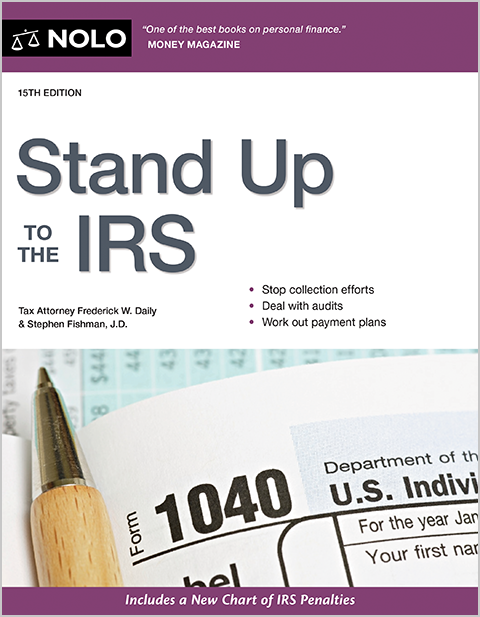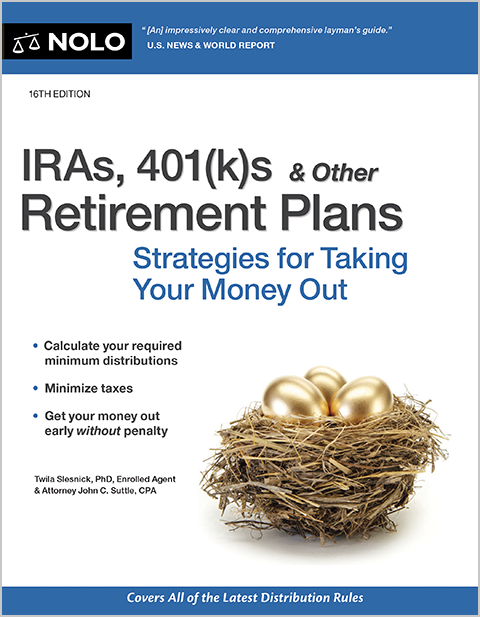You can deduct charitable contributions from your taxable income—if you follow IRS rules.
For taxpayers who itemize, the IRS has a lot of rules about how you must report and document the charitable deductions you claim on your tax return. If you don't follow these rules, your deduction won't be allowed.
Through 2025, only taxpayers who itemize their personal deductions on their tax returns are allowed to deduct their charitable contributions. This rule greatly limits the number of people who can take charitable deductions. Because the standard deduction was roughly doubled in 2018, only about 10% of all taxpayers itemize. So, most taxpayers get no tax benefit from charitable contributions.
However, thanks to the One Big Beautiful Bill Act, a new rule goes into effect for 2026 and later. Taxpayers who don't itemize can deduct cash charitable contributions of $1,000 per year if they are single ($2,000 if they are married, filing jointly).
Deduction for Charitable Contributions Under the One Big Beautiful Bill Act
Again, starting in 2026, single taxpayers can deduct up to $1,000 per year in cash charitable contributions without itemizing. Married individuals filing jointly can deduct $2,000. This deduction applies to direct cash gifts to qualifying 501(c)(3) charities, not donor-advised funds or private foundations.
For those who itemize in 2026 and later, charitable deductions are deductible only to the extent they exceed 0.5% of your adjusted gross income (AGI). Amounts disallowed due to the 0.5% floor are carried forward to be deducted in future years. For example, if your AGI is $100,000 in 2026, and you donate $10,000 to charity, you can deduct $9,500 for 2026 if you itemize, with $500 (0.5% of $10,000) disallowed and carried forward to deduct in future years.
The annual limit on the total amount of charitable contributions taxpayers can deduct is 60% of AGI for cash donations to charity, 30% for donations of appreciated property, such as stocks held over one year, and 50% for noncash donations, including clothing. Excess contributions can be carried forward and deducted over five years. If a taxpayer exceeds one of these limits in 2026 or later, they can also carry forward the amount disallowed by the 0.5% floor for five years.
Charitable contributions can consist of money or property, but property donations are only deductible if you itemize. You can deduct the lesser of the cost of donated inventory or its fair market value on the day it's donated. Usually, only the cost is deductible.
Cash Contributions
Claiming a charitable deduction is simple when you write a check to a charity or make an online donation with your credit card. For a cash gift of any amount, you need a receipt (showing the date and amount of your donation) or a bank or credit card statement, payroll deduction record, cancelled check, or other bank record showing the transaction. Email communications are generally acceptable. If you donate through a text message, the IRS will accept the phone bill as verification if it shows the recipient organization, the amount, and the date given.
If you want to claim a deduction for a cash gift of $250 or more, you must have a written receipt, describing the gift, from the charity. To determine whether or not this requirement applies to you, you do not have to add up all your donations to a particular charity. For example, if you give the local food bank $50 every month, each contribution is separate, and the receipt rule doesn't apply.
The receipt should also state whether or not the charity gave you any goods or services in exchange for your gift. If so, the receipt must describe them and give an estimate of their value. If a nonprofit gives a donor goods or services in exchange for the contribution, it constitutes a quid pro quo contribution and there are other rules that apply. The charity doesn't have to report a low-cost item it gives to you as a token of thanks—for example, a plastic water bottle or coffee mug with the charity's name on it.
You must get the receipt by the time you file your tax return.
Noncash Contributions
Making "noncash contributions," in other words, donating clothing, books, cars, or other items, requires more documentation and sometimes a special IRS form. It all depends on the value of your gifts.
To figure out the value of your gifts, add all the value of all similar items. For example, if you give away a hundred valuable old books, add their value together, even though you might think you're really making a lot of small gifts. The rule applies even if you give the items to different charities.
Gifts of Less Than $250
To deduct a noncash donation worth less than $250, you need a receipt with:
- the charitable organization's name
- the date and location of the contribution, and
- a description of the property (in just enough detail to identify the items).
In some cases, it might not be practical for a donor of property to get a receipt from a nonprofit. For example, if a donor deposits property at a nonprofit's unattended drop site. In this situation, the donor can support a deduction by keeping "reliable written records" containing the following information:
- the name and address of the nonprofit
- the date and location of the contribution
- a reasonably detailed description of the property contributed
- the fair market value of the property at the time of the contribution
- the method used to determine the fair market value, and
- the terms of any conditions attached to the gift of property— for example, whether the property has been earmarked by the donor for a particular use by the nonprofit.
Gifts of More Than $250
If you want to claim a deduction for a gift worth $250 or more, get a written receipt from the charity that describes the gift. The receipt should state whether or not any goods or services were given to you in exchange for your gift. If they were, the receipt must describe them and give an estimate of their value. This acknowledgment is required in every case, even if the donor drops off property at an unattended drop site.
The charity doesn't have to report a low-cost item it gives to you as a token of thanks—for example, a plastic water bottle or coffee mug with the charity's name on it.
Gifts of More Than $500
If you make a total of more than $500 worth of noncash gifts in a calendar year, you must get a written acknowledgment and file Form 8283, Noncash Charitable Contributions, with your income tax return.
Also, you should keep the following information in your records:
- how you got the property—for example, by purchase, gift, bequest, inheritance, or exchange
- the approximate date you got the property (or, if created, produced, or manufactured by or for you, the approximate date the property was substantially completed), and
- the cost or other basis, and any adjustments to the basis, of property held less than 12 months and, if available, the cost or other basis of property held 12 months or more. (This requirement doesn't apply to publicly traded securities.)
For any claimed property deduction of more than $500, the donor must also complete Section A of IRS Form 8283, Noncash Charitable Contributions, and attach it to their tax return.
Gifts of More Than $5,000
If you donate property worth more than $5,000, you need a written acknowledgment and you'll probably need to get an appraisal. There are certain exceptions, including:
- personal property owned less than one year (this is because the donor's deduction is limited to the property's original cost, not its current fair market value)
- publicly traded stock, mutual fund shares, or other securities
- nonpublicly traded stock of $10,000 or less
- a vehicle (including a car, boat, or airplane) for which the donor's deduction is limited to the gross proceeds from its sale
- business inventory, or
- intellectual property, such as a patent.
In addition, the donor must keep the same records that are required for property donations of more than $500 but not more than $5,000.
An appraisal is required whether you donate one big item or several "similar items" that have a total value of more than $5,000. For example, if you give away a hundred valuable old books, and their total value is more than $5,000, you'll need an appraisal even though you might think you're really making a lot of small gifts. The rule applies even if you give the items to different charities.
The information goes in Section B of Form 8283, Noncash Charitable Contributions, which must be signed by the person who appraises your gift and the charity as well as by you. Your appraisal must be from someone the IRS considers a "qualified appraiser." If you don't, you won't be able to claim the deduction. The appraiser must sign Form 8382. There are many professional appraiser organizations whose websites donors can use to help them find a qualified appraiser.
The appraisal must be arranged for and paid for by the donor— the nonprofit can't help pay for it in any way. Moreover, the donor can't deduct appraisal fees as part of the charitable contribution. Nor may a donor deduct them as a miscellaneous itemized deduction on Schedule A of IRS Form 1040. The Tax Cuts and Jobs Act temporarily eliminated these deductions (including deductions for out-of-pocket appraisal costs) for 2018 through 2025, and the One Big Beautiful Bill Act permanently eliminated them.
Special Rules for Donating Vehicles
Whenever a donated vehicle is sold for more than $500, the nonprofit must provide the donor and the IRS with a written acknowledgment within 30 days after the sale. The charity typically provides this information on IRS Form 1098-C, Contributions of Motor Vehicles, Boats and Airplanes.
Getting Help With Tax Deductions
Hiring the right tax professional is important because getting good tax help can translate into more money in your pocket. To learn more about tax deductions, talk to a tax lawyer or another tax adviser.
Talk to a Tax Attorney
Need a lawyer? Start here.
How it Works
- Briefly tell us about your case
- Provide your contact information
- Choose attorneys to contact you
- Briefly tell us about your case
- Provide your contact information
- Choose attorneys to contact you

